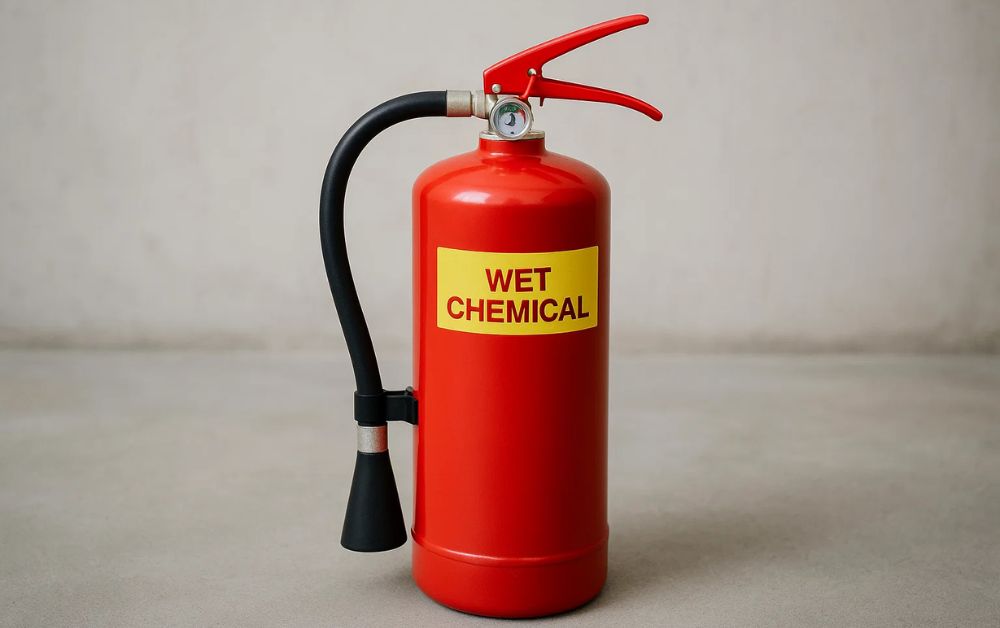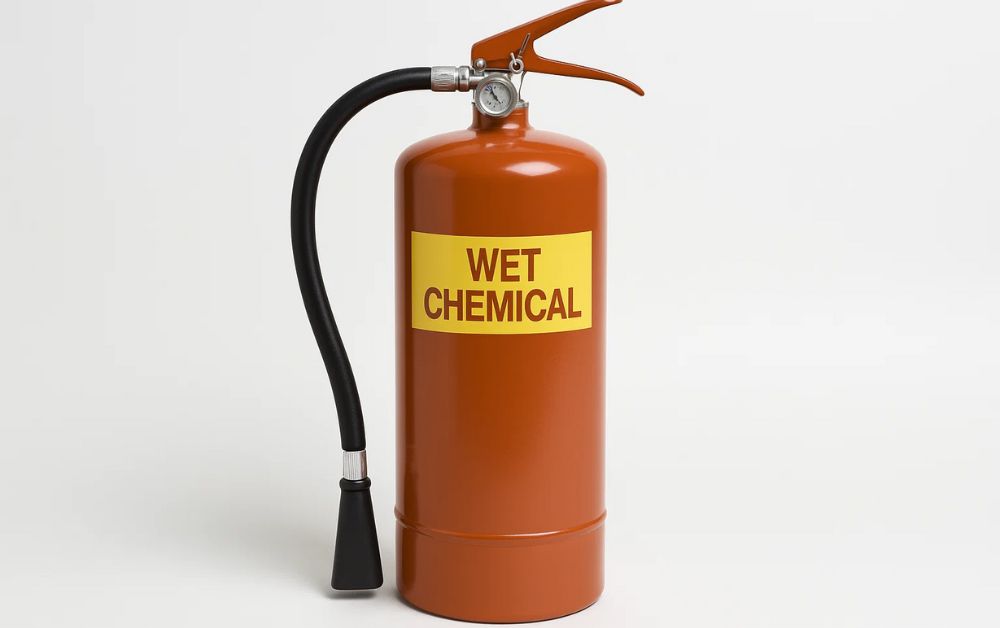
When it comes to kitchen fires, especially those involving cooking oils & fats, wet chemical extinguishers are the most effective solution. Designed specifically for Class F fires, they work by cooling the burning oil and forming a soapy layer over the surface, cutting off the oxygen supply. However, as effective as they are, using them safely is crucial to avoid injury or further damage.
Let’s explore how you can safely operate a wet chemical fire extinguisher in case of a fire emergency.
Understand When to Use a Wet Chemical Extinguisher
Wet extinguishers are mainly used for:
- Class F Fires: Fires caused by cooking oils and fats, typically found in commercial kitchens.
- Secondary Use: Some models can also be effective against Class A fires involving solid combustibles like wood, paper, or textiles.
They should never be used on flammable liquids, gases, or electrical fires unless explicitly stated on the label.
Safety Precautions Before Use
Before attempting to use a wet chemical extinguisher, always keep the following safety tips in mind:
- Evacuate if the Fire is Too Large: If the fire has spread significantly, it is safer to evacuate and call emergency services.
- Turn Off Heat Sources: If safe to do so, turn off the stove or appliance that caused the fire.
- Keep a Safe Distance: Maintain a safe distance (around 1 meter) from the fire while using the extinguisher.
- Ensure Proper Ventilation: After the fire is extinguished, ventilate the area to remove any chemical residue or smoke.
Steps to Use a Wet Chemical Fire Extinguisher
Follow these steps for the safe and effective use of a wet chemical extinguisher:
- Pull the Safety Pin
This unlocks the mechanism and allows you to operate the extinguisher.
- Aim the Nozzle at the Base of the Fire
Target the base where the fire is most intense. For oil fires, aim slightly above the burning oil surface to avoid splashing.
- Squeeze the Handle
This releases the extinguishing agent. Use slow, circular sweeping motions to cover the entire burning surface.
- Apply the Agent Evenly
Ensure that the chemical forms a consistent layer over the burning oil. This layer cools the fire and prevents re-ignition.
- Watch the Area Carefully
After extinguishing the flames, monitor the area closely for any signs of reignition. Do not touch or move the container until it has fully cooled.
After the Fire is Out
Once the fire is out:
- Call professionals to inspect the area and determine if further action is required.
- Do not reuse a discharged extinguisher. It should be refilled or replaced.
- Clean up the residue safely, as the chemical can be slippery and potentially irritating.
Final Thoughts
Wet extinguishers are essential in kitchens and food service environments due to their effectiveness in handling oil-based fires. But like any safety tool, they must be used correctly and with caution to prevent harm and ensure the fire is fully extinguished.
Looking for reliable and certified fire safety solutions? Sensor Tech offers top-quality wet chemical extinguishers and expert guidance to keep your commercial spaces safe.





